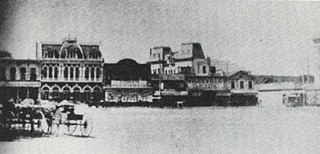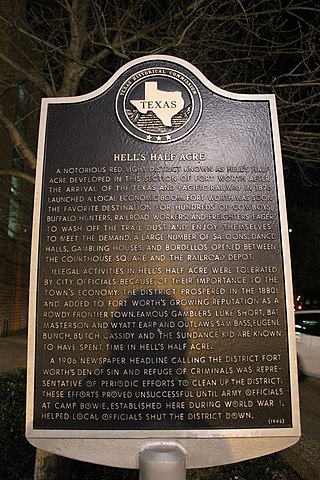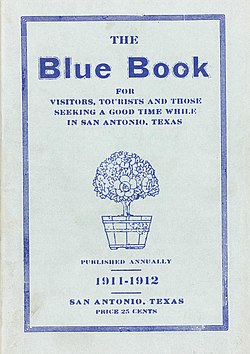
Storyville was the red-light district of New Orleans, Louisiana, from 1897 to 1917. It was established by municipal ordinance under the New Orleans City Council, to regulate prostitution. Sidney Story, a city alderman, wrote guidelines and legislation to control prostitution within the city. The ordinance designated an area of the city in which prostitution, although still nominally illegal, was tolerated or regulated. The area was originally referred to as "The District", but its nickname, "Storyville", soon caught on, much to the chagrin of Alderman Story. It was bound by the streets of North Robertson, Iberville, Basin, and St. Louis Streets. It was located by a train station, making it a popular destination for travelers throughout the city, and became a centralized attraction in the heart of New Orleans. Only a few of its remnants are now visible. The neighborhood lies in Faubourg Tremé and the majority of the land was repurposed for public housing. It is well known for being the home of jazz musicians, most notably Louis Armstrong as a minor.

A red-light district or pleasure district is a part of an urban area where a concentration of prostitution and sex-oriented businesses, such as sex shops, strip clubs, and adult theaters, are found. In most cases, red-light districts are particularly associated with female street prostitution, though in some cities, these areas may coincide with spaces of male prostitution and gay venues. Areas in many big cities around the world have acquired an international reputation as red-light districts.
Venus Alley was a famous red-light district once located in Butte, Montana in the United States. It flourished from the late 19th century through the early 20th century and was one of the last openly tolerated urban prostitution districts in the American West, along with the one in Reno, Nevada. It was closed in the 1970s.

Baltimore's The Block is a stretch on the 400 block of East Baltimore Street in Baltimore, Maryland, containing several strip clubs, sex shops, and other adult entertainment merchants. During the 19th century, Baltimore was filled with brothels, and in the first half of the 20th century, it was famous for its burlesque houses. It was a noted starting point and stop-over for many noted burlesque dancers, including the likes of Blaze Starr.

The Levee District was the red-light district of Chicago from the 1880s until 1912, when police raids shut it down. The district, like many frontier town red-light districts, got its name from its proximity to wharves in the city. The Levee district encompassed four blocks in Chicago's South Loop area, between 18th and 22nd streets. It was home to many brothels, saloons, dance halls, and the famed Everleigh Club. Prostitution boomed in the Levee District, and it was not until the Chicago Vice Commission submitted a report on the city's vice districts that it was shut down.
The Chicken Ranch was an illegal brothel in the U.S. state of Texas that operated from 1905 until 1973. It was located in Fayette County, about 2.5 miles (4.0 km) east of downtown La Grange. The business served as the basis for the 1973 ZZ Top song "La Grange", and the 1978 Broadway musical The Best Little Whorehouse in Texas, as well as its 1982 film adaptation.

Prostitution is illegal in the vast majority of the United States as a result of state laws rather than federal laws. It is, however, legal in some rural counties within the state of Nevada. Additionally, it is decriminalized in the state of Maine. Prostitution nevertheless occurs elsewhere in the country.
Fannie Porter was a well-known madam in 19th-century Texas, in the United States. She is best known for her popular San Antonio brothel, and her association with several famous outlaws of the day.
The Stingaree was a neighborhood of San Diego between the boom of the 1880s and the demolition and vice eradication campaign of 1916. The reason for the neighborhood's fame was its role as the home to the city's "undesirables", including prostitutes, pimps, drug dealers and gamblers. For similar reasons of societal exclusion, it was also the site of the city's first Chinatown. Additionally, the neighborhood was home to many other lower-class citizens, and was in the center of a wider blue-collar residential area encompassing much of the city south of Broadway.
The Sporting District was an area near 16th and Harney Streets in Omaha, Nebraska where city boss Tom Dennison kept the majority of his gambling, drinking and prostitution interests from the late 19th century until the end of his reign in 1933. "Cowboy" James Dahlman was reputedly voted to the first of eight terms as mayor of Omaha because he was more tolerant of the Dennison's "Sporting District" in the middle of the city.

The Vaudeville Theater ambush was the ambush and murder on March 11, 1884, by Joe Foster and Jacob Coy of former lawmen Ben Thompson and King Fisher. It took place at the Jack Harris Vaudeville Saloon and Theater in San Antonio, Texas. The ambush was in revenge for Ben Thompson's shooting of Jack Harris two years earlier.

The Free State of Galveston was a satirical name given to the coastal city of Galveston in the U.S. state of Texas during the early-to-mid-20th century. Today, the term is sometimes used to describe the culture and history of that era.

Josephine "Chicago Joe" Airey, was an Irish-born American prostitute, madam, and proprietor of brothels, dance halls, a variety theatre, and saloons in Helena, Montana. She eventually became the most influential landowner in Helena. She was known as "Chicago Joe" Hensley following her marriage to James T. Hensley.

The history of vice in the U.S. state of Texas has been an important part of the state's past and has greatly influenced its development. Vice activities, such as gambling and prostitution, have historically been a significant facet of both the state's culture and its economy.
A cattle town was a frontier settlement in the Midwestern United States that catered to the cattle industry. The economies of these communities were heavily dependent on the seasonal cattle drives from Texas, which brought the cowboys and the cattle that these towns relied upon. Cattle towns were found at the junctions of railroads and livestock trails. These towns were the destination of the cattle drives, the place where the cattle would be bought and shipped off to urban meatpackers, midwestern cattle feeders, or to ranchers on the central or northern plains. Cattle towns were made famous by popular accounts of rowdy cowboys and outlaws who were kept under control by local lawmen, but those depictions were mostly exaggeration and myth.

The Dumas Brothel was a brothel in Butte, Montana. The brothel was founded by French-Canadian brothers Joseph and Arthur Nadeau in 1890 and named after the nominal owner, Delia Nadeau, née Dumas, who was Joseph's wife. It grew considerably through the years, with the miners employed by the city's copper mines often patronizing the establishment. After several changes of the "madams" and continuing pressure from authorities, the brothel closed in 1982, described as "a rare, intact commentary on social history". At the time of its closure, it was the longest operating brothel in the United States, having operated years after prostitution was made illegal. After closing, the brothel changed hands several times, eventually becoming a tourist attraction owned and managed by a series of Butte residents.

Hell's Half Acre was a precinct of Fort Worth, Texas designated as a red-light district beginning in the early to mid 1870s in the Old Wild West. It came to be called the town's "Bloody Third ward" because of the violence and lawlessness in the area.
Young black women of the Harlem Renaissance lived with uncertainty of their rights and their roles at a time in which women began to question their sexuality in fear of facing the scrutiny. The women of Harlem began questioning their equal rights and freedom of sexual expression. One occupation that flourished was prostitution. In the early 1900s, New York City thrived with prostitution. Amidst the artistic spectrum of the Harlem Renaissance, the occupation of prostitution created an underlying tension for African American women and their right to solicit their bodies for profit. Preceding World War One, American ideology of sexuality was restrained by religion and denial. Sex was a private matter and was deemed taboo outside of procreation. Idealized notions of the sexual union, however, made non-procreative sex lustful and demeaning. This way of thinking immediately pushes prostitution into the spectrum of being a sinful act and portraying the act in a demeaning manner.
Prostitution in Los Angeles in the 19th century was centered in Los Angeles' red-light district and was controlled by powerful male figures. The business of prostitution thrived due to its proximity to a working-class male subculture in the red-light district. Crib prostitution made up the majority of the sex industry in Los Angeles at this time and this created diversity within the red-light district. Chinese prostitutes were particularly prominent in the crib district. The sex industry was largely male dominated, specifically by Tom Savage and Bartolo Ballerino. They both built their reputations using political alliances which solidified their hold on the crib district in Los Angeles.













